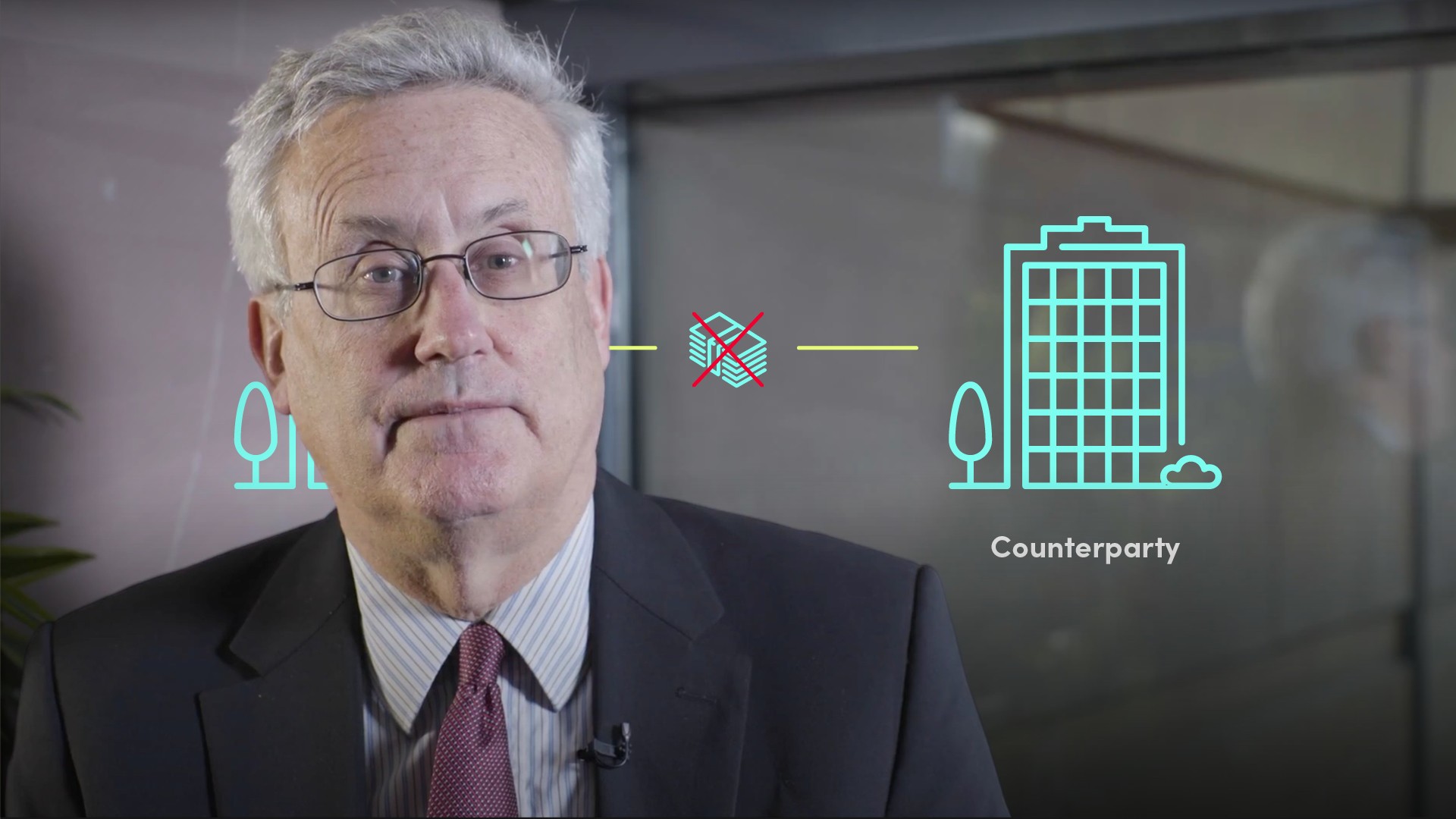
Introduction to Bank Credit Risk Management

Peter Eisenhardt
30 years: Capital markets & investment banking
Peter covers credit risk and its applications in the real world - starting with both qualitative and quantitative assessments, before considering the consequences of a borrow default.
Peter covers credit risk and its applications in the real world - starting with both qualitative and quantitative assessments, before considering the consequences of a borrow default.
Subscribe to watch
Access this and all of the content on our platform by signing up for a 7-day free trial.

Introduction to Bank Credit Risk Management
22 mins 43 secs
Key learning objectives:
Identify the actions banks can take to manage credit risk and the financial ratios used
Define credit risk
Learn what the bank can do if the borrower doesn’t repay
Overview:
Everything at a bank revolves around credit risk. A banker’s job is to be wary of and manage the risk as best it can. If the risk is left ungoverned, the consequence could be catastrophic - for example, liquidation.
Subscribe to watch
Access this and all of the content on our platform by signing up for a 7-day free trial.
What is credit risk, and give an example?
- The risk of loss caused by the failure of a counterparty to meet any of its obligations
- For example, the risk that a counterparty can fail before delivering a security at the agreed upon price, forcing the bank to pay a higher price in the market
How can a bank survive credit risk?
- Identify the risks
- Measure the risks
- A bank must assess the likelihood that a counterparty will default
- A bank must assess loss given default - how much is the bank likely to lose if the counterparty runs into difficulty and fails to perform?
- A bank must aggregate the risks to determine its overall profile - what are the portfolio effects?
- Manage the risks
- Banks must have self imposed credit limits for counterparties, industries and countries
- Risk must be diversified to avoid being brought down by outsized concentrations
- A strong credit department is necessary to ensure that bankers adhere to limits
- Banks must be able to constantly manage and adjust risk positions
How can banks manage their risk profile?
- Change their business approach by adjusting their pricing, products, and industry focus
- Hedge, by using credit derivative markets
- Sell - or repackage and then sell - loans and securities
What is the 5C’s framework?
Bankers allocated credit using the following subjective judgements:
- Character
- What do we think of management? What is their track record of paying back their obligations?
- Capacity
- How are we getting paid back? What business will generate the cash flow stream necessary to pay interest and principal?
- Capital
- If income drops, are there sufficient capital reserves to draw upon? Do the company’s investors have enough “skin in the game”, so all risk isn’t on the lender?
- Collateral and Conditions
- Do the loan documents have terms like collateral, covenants, and seniority that help protect the lender if the borrower runs into difficulty?
- Cycle
- What phase are we in in the credit cycle? Is an economic or industry sector downturn coming? Is the company positioned to weather a difficult period?
What company attributes must banks consider in credit analysis?
Market share, franchise value, quality of products and services, innovation, brand, barriers to entry, labour markets, regulation, and operating efficiency.What are some of the financial ratios used in credit analysis?
- Leverage ratios - Indicate the extent of reliance on debt financing, and measure the relative contribution of stockholders and creditors. E.g. debt to equity ratios
- Liquidity ratios - Measure the ability to meet current obligations as they come due, and indicate the ease of turning current assets into cash. E.g. working capital ratios
- Profitability ratios - Measure the ability to generate revenues in excess of costs. E.g. gross profit margins and return on assets
- Efficiency ratios - Indicate how well assets are used to generate sales and profits, and measure the ability to control expenses. E.g. sales and inventory turnover ratios
What biases may be used in analysing retail credit decisions?
Race, religion, national origin, gender, or marital status.What is the role of credit reference agencies in generating credit scores for individuals?
A credit score is a numerical expression of creditworthiness based on automated scoring without any human intervention. The agencies collect financial information from sources including creditors, lenders, utilities, debt collection agencies, and public records in order to generate this score.How can consumers improve their own credit scores?
- Pay bills on time
- Reduce debt (paying off the most expensive first)
- Avoid searching too much for credit or opening unnecessary accounts, because it may appear they are trying to over borrow
- Avoid moving debt around to put off repayment
What weighting is given to each factor in credit scoring methodologies?
- Payment history - 35%
- Debt to credit ratio - 30%
- Average age of accounts - 15%
- Types of credit - 10%
- Enquiries - 10%
After assessing the borrower and the product, what other measures do banks estimate?
- Probability of default - describes the likelihood of default over a particular time horizon
- Expected exposure at default - The gross exposure upon default
- Expected loss given default - The “economic” loss for non-defaulted assets
How do banks set the rate for a loan?
- Banks approach every loan with their target rate of return on capital in mind - The concept of RAROC - Risk-Adjusted Return on Capital
- RAROC = Cost of borrowing to fund the loan + Administrative costs + expected loan loss
- Using the amount of capital that must be held against the loan, the model then calculates the interest rate the bank needs to charge to achieve the targeted return on capital
- RAROC allows banks to compare loans, better understand risk and reward, make better decisions and maximise returns on capital
What can the bank do if the borrower doesn’t repay?
- Banks might first attempt to refinance the debt, which involves extending the maturity and thus reducing rescheduling payments
- If a realistic assessment of the company’s finances outlook shows the debt burden is still too great, a debt restructuring may be necessary
- Beyond refinancing, a workout can involve exchanging debt for equity and reduction of debt
- If the relevant parties, i.e. creditors, shareholders and management cannot agree that the company continuing on as an ongoing concern is worth more than the assets, the parties should then work towards an orderly liquidation
What modelling techniques are used in risk management at large banks?
- Sensitivity analysis - Shows the range of outcomes that may arise if a specific assumption is changed
- Scenario analysis - Identifies key changes in the financial performance could result from economic events
- Simulation - Involves running a very large number of computer-generated assumptions and scenarios based on an analysis of their probabilities (Monte Carlo)
What are the key functions of the Board when reviewing loans?
- Identify loans with potential weaknesses
- Re-grade loans and create a watch list
- Develop a watch list strategy for monitoring and potential action
- Assess risk trends and underwriting standards in segments of the portfolio
- Review loan documentation
- Confirm adherence to credit policy
- Evaluate data and reporting
Subscribe to watch
Access this and all of the content on our platform by signing up for a 7-day free trial.

Peter Eisenhardt
There are no available Videos from "Peter Eisenhardt"



























